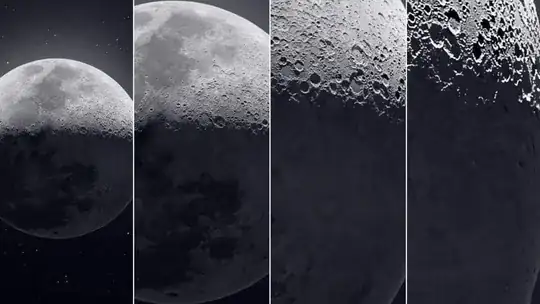With lucky imaging, Earth telescopes can achieve a resolution of about 0.1 arcsecond (or about $5×10^{-7}$rad) This is limited by the atmosphere, and having a big, professional telescope actually doesn't help much.
A fact of using lucky imaging is that you don't get the same resolution across the area that you are imaging. Some parts may, by luck, achieve higher resolutions than others.
With 0.1 arcsecond resolution at lunar distance is about 200m. Quite impressive, but a lot larger than a proverbial "tennis ball". The VLT will have been using adaptive optics and working in the infrared (where the twinkling caused by the atmosphere can be compensated for more easily) It is also doing astrometry rather than imaging. It is possible to get sub-arcsecond astrometry even if the source is not fully resolved.
